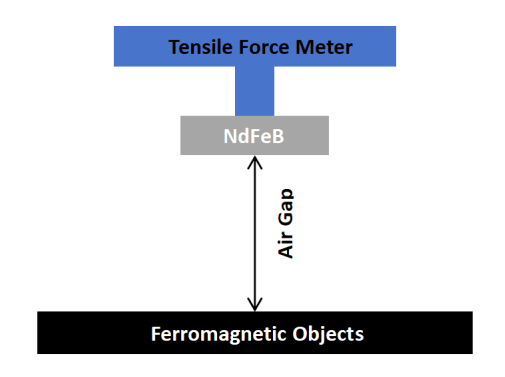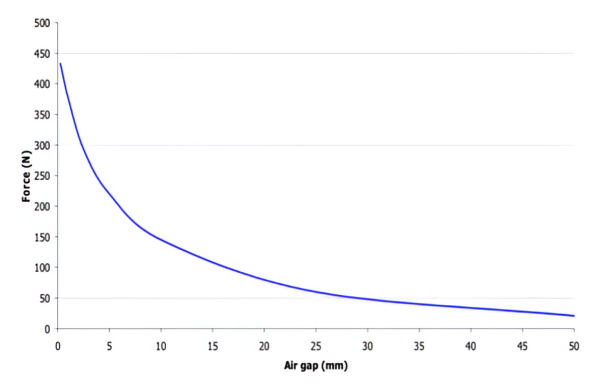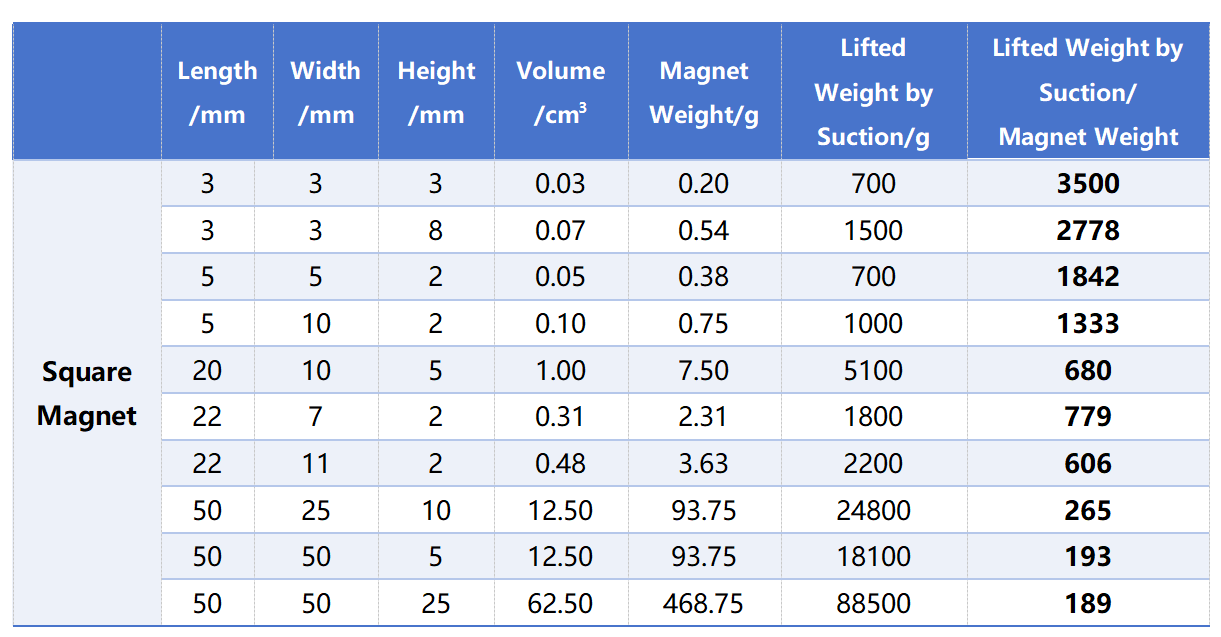In the applications of magnets, magnetic flux or magnetic flux density is an important indicator for measuring their performance (especially in electric motors). However, in some fields such as magnetic separation and salvage, magnetic flux is not a quantity that can effectively measure the separation or adsorption effect. Instead, magnetic suction force is a more effective indicator.
The magnetic suction force refers to the force exerted by a magnet that causes it to attract certain materials.It is jointly affected by factors such as the performance, shape, size of the magnet, and the adsorption distance. There is no mathematical formula that can calculate the suction force of a certain magnet. However, the value of the magnetic suction force can be measured by a magnetic suction force measuring device (generally, the pulling force of the magnet is measured and then converted into weight), as shown in the following figure. The suction force of the magnet will gradually decrease as the distance from the attracted object increases.


In this experiment, sintered neodymium-iron-boron N42 magnets of different shapes and sizes were selected. All of them have a lnickel-copper-nicke coating and are magnetized in the height direction. The maximum pulling force (at the N pole) of each magnet was measured respectively and converted into the adsorption weight. The measurement results are as follows:


It is not difficult to find out from the measurement results that:
· The shape and size of the magnet can also cause variations in the suction force. Even if the grades are the same, larger-sized magnets often generate a greater suction force.
· For circular and cylindrical magnets with the same diameter, the greater the height, the heavier the weight that can be lifted, and the suction force is basically proportional to the height.
· For circular and cylindrical magnets (in the blue cells) of the same height, the larger the diameter, the greater the weight that can be lifted. The suction force is basically proportional to the diameter.
· For circular and cylindrical magnets (yellow cells) with the same volume and weight, the diameters and heights are different, and there are significant differences in the weight that can be lifted.
The suction of magnets is related to a variety of factors, including shape and size, as well as coating, orientation, temperature, humidity, and other factors. The suction of magnets is worth exploring in depth.











